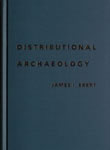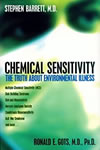Dr. Christopher D. Dore, Registered Professional Archaeologist 10331, provides expert witness services in the fields of archaeology and cultural resource/heritage management. His expert services focus on archaeological site damage, environmental/cultural resource compliance, professional performance and conduct, and contaminated site history (determining the origin and time of contamination through archaeological methods). He has trial, deposition, litigation, and consultation experience on major, controversial, and high-profile cases throughout the United States.
With an MBA in addition to his doctoral degree in anthropology, Dr. Dore is particularly sought after for cases involving the valuation of damage to cultural resources.
Dr. Dore has participated in criminal and civil cases for both the prosecution and defense, and for private and governmental clients. Dr. Dore has provided training in damage documentation and valuation to professional archaeologists, lectured at the University of Arizona’s College of Law, provided continuing education for the Rocky Mountain Mineral Law Foundation, and is a co-author of the Society of American Archaeology’s Professional Standards for the Determination of Archaeological Value. He is a professional member of the Forensic Expert Witness Association and a Certified Forensic Litigation Consultant.
Dr. Dore is accomplished, credible, and well recognized in the archaeological community. He has held faculty positions at five major research universities and received research grants from sources including the National Science Foundation. Dr. Dore is the President-Elect of the Society for American Archaeology (SAA). He has also served as the President of the Register of Professional Archaeologists, archaeology's standards and credentialing organization, and the American Cultural Resources Association. He has been the editor of Advances in Archaeological Practice: A Journal of the Society for American Archaeology. Dr. Dore has received a Presidential Recognition Award from the SAA and the Asa T. Hill Memorial Award for outstanding contributions to Plains archaeology from the Nebraska State Historical Society. Dr. Dore specializes in the archaeology of the southwest United States, California, and Mexico.
By: Dr. Christopher Dore
The Society for American Archaeology (SAA) is an international organization dedicated to the research, interpretation, and protection of the archaeological heritage of the Americas. With more than 6,800 members, the society represents professional, student, and avocational archaeologists working in a variety of settings including government agencies, colleges and universities, museums, and the private sector.
By: Christopher Dore
This chapter provides an archaeological perspective on the Archaeological Resources Protection Act of 1979 (ARPA).










